Coffee, Wood, and Learning the Hard Way
You know, I was just sitting back the other day, sipping my morning cup of coffee, and I couldn’t help but think about how, a few years ago, I dove headfirst into woodworking. It all started when my buddy Dave in the neighborhood asked if I could help him make a bookshelf for his little girl’s room. Sounds simple enough, right? Well, that was my first taste of what this craft really entailed, and, boy, did it come with a curveball of lessons.
Taking a Leap
I remember standing in Dave’s garage, wood all around us, the smell of pine making everything feel a bit more legitimate. He had picked out some cheap pine boards, and I thought, “How hard can it be to put some wood together?” Little did I know that woodworking would not just be about nailing pieces together. I was a rookie with a passion but had no clue about the tools.
So, I marched right in with my father’s old circular saw and a hammer that has seen better days. I felt like I was in over my head, and I almost threw in the towel when I butchered the first cut. The board splintered, big cracks shooting out from the edges like a sad attempt at modern art. My heart sank, and I was like, “What have I gotten into?”
Hardwood vs. Softwood? Who Knew?
Talking about types of wood, I can still hear Dave chuckling at me when I tried explaining the difference between hardwood and softwood. “Do you think oak is soft, buddy?” he asked with a raised eyebrow. Yeah, I thought I was being clever. That day, through a happy accident, I ended up learning that softwoods can be surprisingly forgiving. After laughing it off, we decided to stick with pine for the simplest way forward. But let me tell you, working with pine was like trying to tame a wild child—the knots, the warps, the way it seemed to change character halfway through a project.
The Unexpected Search for Tools
Then there was the saga of finding tools. I popped into our local hardware store, which is basically a treasure trove for us DIY-ers. You can smell the lumber in the air, mingling with the faint scent of fresh paint. I’ll be honest; I just wanted a tool belt and to look cool like Norm Abram. But the bewilderment hit me when I stood in the aisle staring at all the clamps, chisels, and jigs. I felt like a lost puppy. I didn’t know what half of it was for—so many choices! I ended up picking up a random set of clamps, thinking, “These’ll do.” Spoiler alert: they didn’t.
I got home, ready to put my ‘pro’ tools to use, but it was like wrestling an octopus when I tried to hold pieces together while clamping them in a good position. After a series of rather colorful expressions, I found myself thinking, “Why didn’t I just fork over some more cash for good tools?” So, a piece of advice: invest in decent clamps and a reliable square. The last thing you want is a wobbly project.
Learning and Failing
Fast forward a few weeks, and I decided to take on a small project for my own place. I figured I’d try my hand at building a coffee table. Ha! That might be the classic blunder for a beginner. I designed a fancy, modern table in my mind, with angled legs.
The day of reckoning came, and I gathered my supplies—more pine, some leftover screws, and a lot of enthusiasm. It started off all well and good, cutting the boards down to size and feeling accomplished. But, when it came to assembly, ugh—I didn’t measure twice, and let’s just say my table ended up looking like it was on a serious incline, like a roller coaster at the county fair.
I remember sitting there staring at my crooked masterpiece, thinking, “What the heck did I just do?” I almost gave up and resigned myself to the fact that I’d need to get a regular table from IKEA—but you know what? I decided to flip it over and give it another shot. I stripped it back down, remeasured, and got to work again.
When it all finally came together, that “thump” sound of wood against wood, and that satisfying click of screws tightening down—it felt incredible. I even laughed at the fact that it actually worked. I had a coffee table that was sort of level, and I was filled with pride. Sure, no one would mistake it for a fine piece of furniture, but I made it, and it felt pretty damn good.
The Books That Saved Me
Now, throughout this whole journey, I discovered some books that really helped ease the learning process—books that welcomed me into this world without overwhelming me. One that stood out was “The Complete Manual of Woodworking” by Albert Jackson and David Day. It felt like having a woodworking buddy right there with me, giving me tips on everything from joinery to finishing techniques, which saved me more than a few headaches. I also loved “Woodworking Basics” by Peter Korn. It broke things down in a way that didn’t seem so daunting, which I badly needed.
Man, each page smelled like fresh wood shavings; an invitation to dive back in rather than retreat in fear. I picked up valuable skills from these books that later made my projects feel like a dance instead of a wrestling match.
The Takeaway
So, here I am, still learning and tinkering away in my garage. If you’re thinking about trying woodworking or even just dipping your toes into it, just go for it! Trust me, there’s a hundred ways to mess up—a thousand, probably—but there’s also a hundred ways to learn and laugh about it. Don’t let those early mistakes shake you.
Each project is like a little life lesson, one that teaches you patience, precision, and maybe even a little humility. I wish someone had told me this earlier: It’s not just about the finished product, it’s about the journey, the fumbling hands, the sweet smell of sawdust, and the happiness of creating something—yes, even if it’s a little crooked. Enjoy it!


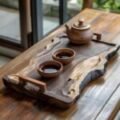
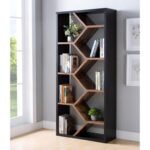
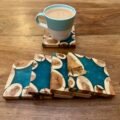

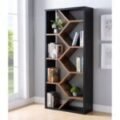
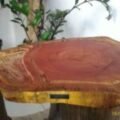


-120x120.jpeg)